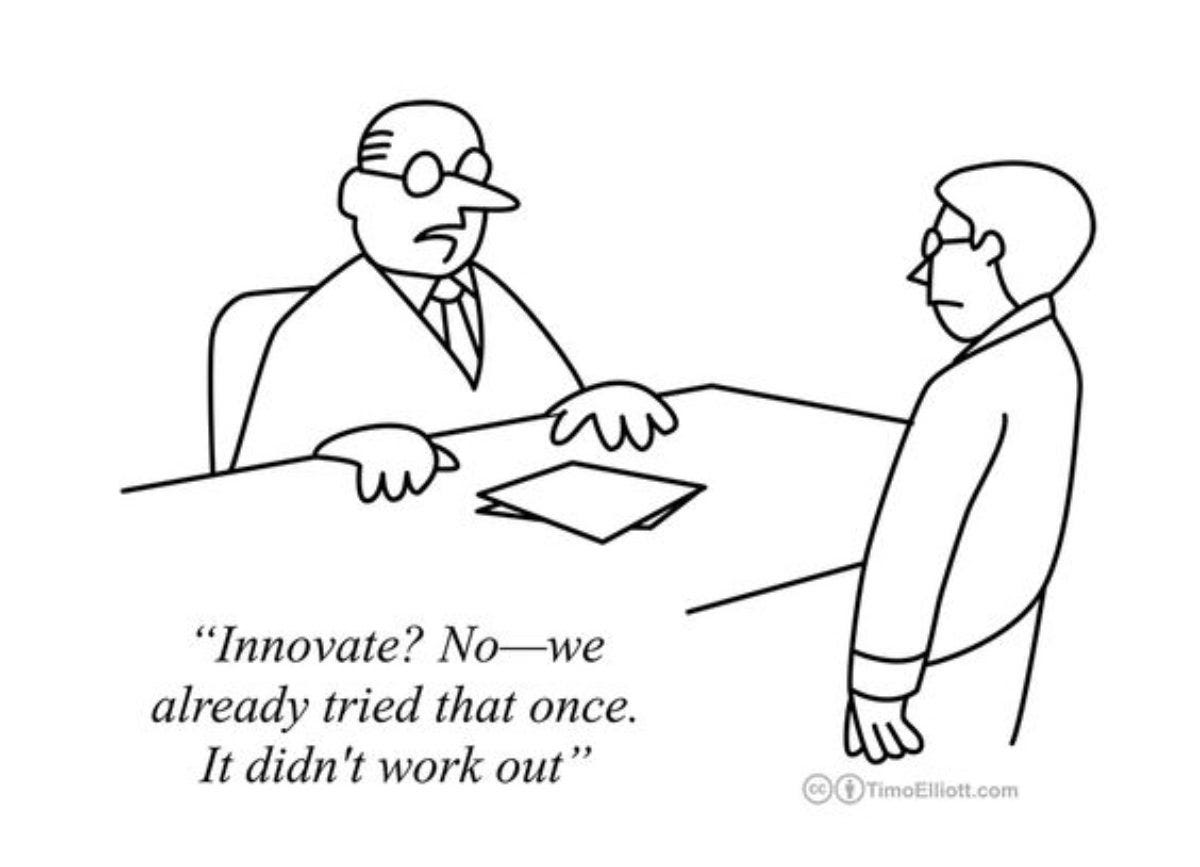How Innovation (Doesn't) Work
What is innovation and how can you get started with it right away?
Hey there,
In high school, I often found Economics classes rather dull. They were about business cycles, Keynes, supply and demand, debtors and creditors.
It wasn't until my Master's in Innovation Sciences in Groningen that I encountered a fascinating economic theory, conceived by a flamboyant thinker.
The Austrian Joseph Schumpeter (1883-1950) developed the theory of creative destruction (more on this later). Schumpeter had considerable flair. He claimed he had three goals in life:
"I want to become the world's greatest economist, the best horseman in Vienna, and the best lover in Austria."
As you can deduce from this, Schumpeter was an outsider among economists. But his ideas about the impact of innovation on the economy have had far-reaching influence.
In the coming newsletters, I'll share more with you about innovation. In this edition, a logical beginning: what is innovation?
Enjoy reading,
Peter
PS. Or if you prefer watching, I made this (Dutch) video about this topic:
Why innovation?
Innovation is an important theme for entrepreneurs, directors, and executives. Because by bringing new products to market, doing processes differently, or organizing yourself more cleverly, you can gain more customers, improve service delivery, or reduce costs.
Reason enough to get started with innovation. In this edition, I cover the basics: what actually is innovation, what is creative destruction, and what are practical tips to get started.
What is Innovation?
When I give a lecture about innovation, I discuss what innovation is at the beginning of the session. Because many people have an image or feeling about innovation, but find it difficult to put the term into words.
This is the definition I use:
Innovation is a process of value creation, by using knowledge and other resources in a way that has not been done before.
This definition contains several important elements:
Process: there is input (such as ideas), activities (such as brainstorms or R&D), and output (a product, service, or business model).
Not done before: the output is new for the specific context or setting in which it is applied.
Value creation: the output has added value for the user or other stakeholders.
Particularly the last element of value creation is important. This makes an invention something different from an innovation.
For example: a computer chip is an invention. As soon as this chip creates new possibilities that didn't exist before, such as in smartphones, it becomes innovation.
Creative Destruction
Joseph Schumpeter built on Werner Sombart's work with his theory of creative destruction:
Creative destruction is a process of continuous technical innovation, where successful applications of new techniques destroy the old ones.
The core of this theory is that innovations, such as new technologies, production methods, or business models, cause fundamental changes in the economy. These innovations displace existing structures, companies, and professions.
For example: self-checkout at supermarkets displaces the profession of cashiers.
Involve Everyone in Innovation
The biggest barrier to innovation that participants in my lectures mention is culture. They mention that important elements of innovation, such as trying new things and making mistakes, are not recognized, rewarded, or stimulated.
I also notice that many companies think they're covered with an Innovation department. A typical reaction is: 'I don't need to innovate. We have an Innovation team for that, right?'
But it's more powerful to involve everyone in innovation. Because account managers, maintenance technicians, nurses, and other employees often think in their work that something could be done better, faster, or differently.
Tip: Give employees with ideas the opportunity to test them cheaply and quickly themselves.
A well-known example is software company Adobe. Employees with a good idea get a red box, the Kickbox. The box contains the following:
Post-its for brainstorms
Short step-by-step plan to test your idea
Booklet to write down ideas
Credit card with $1,000 credit
Chocolate bar, for energy and good mood
More companies now apply this Adobe idea. Smart, because this way innovation doesn't remain limited to one team or one department.
Deep Dive on AI & Work
Articles, books, podcasts, videos, documentaries, and more on this theme.
1. LISTEN / I recorded a Dutch podcast with Susan about innovation:
2. WATCH / The series The Playlist (Netflix) beautifully shows how technological innovation upends an entire industry and culture, despite fierce resistance from established interests.
🙏 Thank you for reading
This newsletter is free, but not cheap to make.
You can help me in a number of ways: forward this newsletter to someone who likes it, subscribe to my YouTube-channel, or hire me to speak.
Interested to hire me? Feel free to fill this form!



